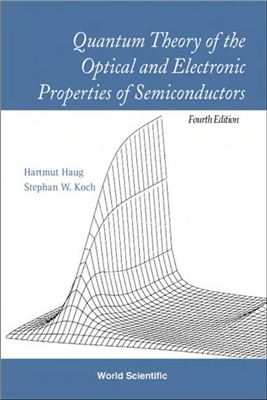2004. - 453 p.
The electronic properties of semiconductors form the basis of the latest and current technological revolution, the development of ever smaller and more powerful computing devices, which affect not only the potential of mode science but practically all aspects of our daily life. This dramatic development is based on the ability to engineer the electronic properties of semiconductors and to miniaturize devices down to the limits set by quantum mechanics, thereby allowing a large scale integration of many devices on a single semiconductor chip.
Parallel to the development of electronic semiconductor devices, and no less spectacular, has been the technological use of the optical properties of semiconductors. The fluorescent screens of television tubes are based on the optical properties of semiconductor powders, the red light of GaAs light emitting diodes is known to all of us from the displays of domestic appliances, and semiconductor lasers are used to read optical discs and to write in laser printers. Furthermore, fiber-optic communications, whose light sources, amplifiers and detectors are again semiconductor electro-optical devices, are expanding the capacity of the communication networks dramatically.
The electronic properties of semiconductors form the basis of the latest and current technological revolution, the development of ever smaller and more powerful computing devices, which affect not only the potential of mode science but practically all aspects of our daily life. This dramatic development is based on the ability to engineer the electronic properties of semiconductors and to miniaturize devices down to the limits set by quantum mechanics, thereby allowing a large scale integration of many devices on a single semiconductor chip.
Parallel to the development of electronic semiconductor devices, and no less spectacular, has been the technological use of the optical properties of semiconductors. The fluorescent screens of television tubes are based on the optical properties of semiconductor powders, the red light of GaAs light emitting diodes is known to all of us from the displays of domestic appliances, and semiconductor lasers are used to read optical discs and to write in laser printers. Furthermore, fiber-optic communications, whose light sources, amplifiers and detectors are again semiconductor electro-optical devices, are expanding the capacity of the communication networks dramatically.

